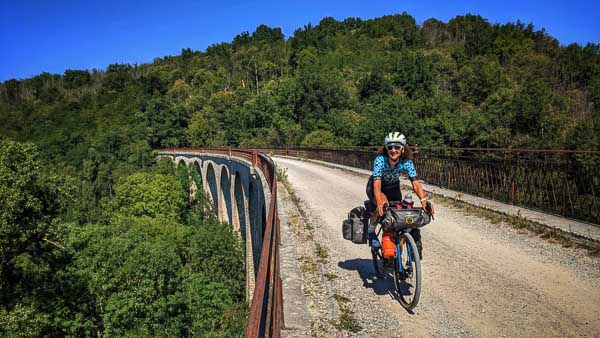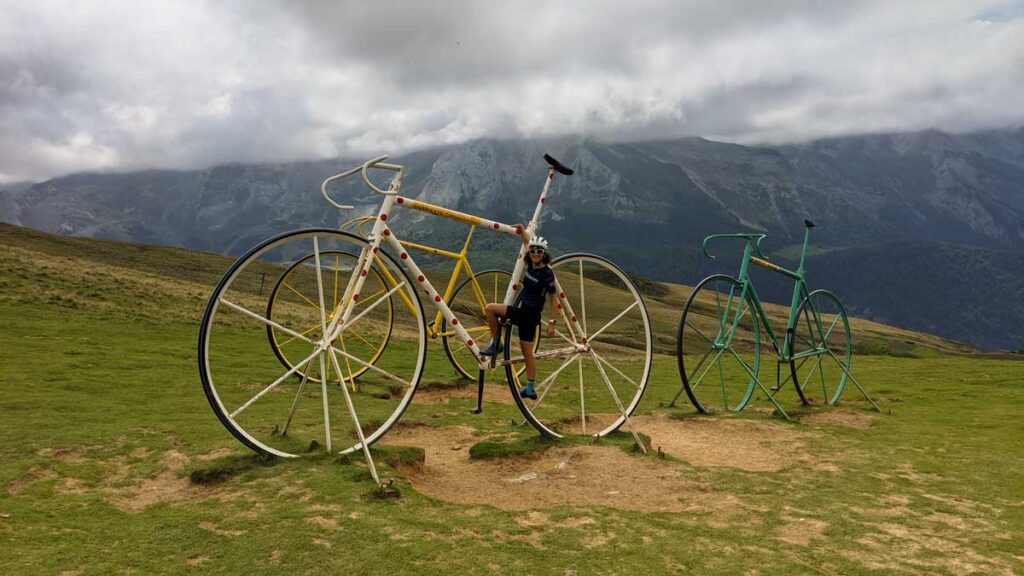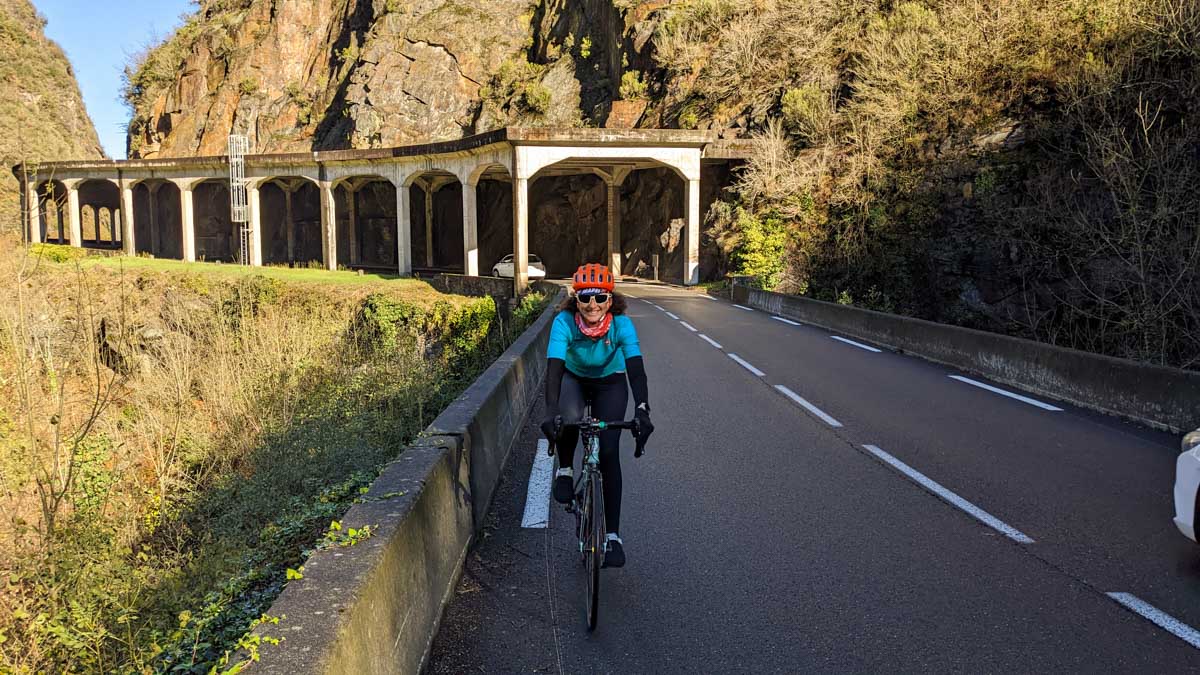Cycling in the Pyrenees: The Best Base for a Pyrenees Cycling Holiday
Post last updated:
Choosing the right base for your cycling adventure in the Pyrenees is essential for a successful trip. With so many towns and villages to choose from, it can be overwhelming to decide where to stay. When I first visited over 10 years ago I had no clue where to stay and in many respects, it was just lucky that I chose Argeles Gazost. I have since learned a lot and now that I live in the Pyrenees am very familiar with the region and the different towns and villages. In my experience, the number one consideration when choosing the best base for a Pyrenees cycling holiday is the cycling climbs or cycling routes you wish to ride.
The Pyrenees mountain ranges are nearly 500km in length and there are cycling climbs and cycling routes everywhere for you to experience. Across the mountain range, there are a number of locations that stand out as the best base for cycling in the Pyrenees including Argeles-Gazost, Lourdes, Bagneres de Bigorre, Oloron Saint Marie, Arreau, Bagneres de Luchon, and Foix. These are just some of the many options that offer easy access to some of the most spectacular cycling climbs and routes in the Pyrenees.
To choose the best base for a cycling holiday in the Pyrenees I think there are 6 things for you to consider based on our own experience of visiting and living here. In order of importance, these are, what climbs and routes you want to ride, how you will travel to the Pyrenees, the style of accommodation you like, whether you bring your own bike or need to hire one and who else you are travelling with. Having answers to each of these will narrow down the choices of places to stay and make sure you choose the best base for your Pyrenees cycling holiday. I will discuss each of these in turn in the remainder of the article.


Once you have narrowed your search down to a few places you want to base yourself in, the next obvious step is to consider where to stay in terms of accommodation. I have put together a separate where to stay in the Pyrenees for a cycling holiday guide to help you with that aspect. In it, we focus on some of the cycling hotels and lodges that are available across the Pyrenees.
1. The climbs and cycling routes you want to cycle
So the first and most important step in choosing the best base for cycling in the Pyrenees is to determine which climbs or routes you would like to experience. The Pyrenees span a distance of 491km from east to west and there is great cycling to be experienced right across the mountain range. As such, there is no single location to base yourself in that will allow easy access to everything on offer. Once you have selected where you wish to cycle you will find that there are obvious places to stay within easy cycling distance from those climbs or routes.
Don’t rule out staying a few days in one place, then a few days in another to make the cycling access easier. I did that in 2016 when we spent the first 4 days in the Pyrenees in Saint Lary Soulan before moving to Argeles Gazost for the next 7 days. Personally, I look to choose a location where we can ride from our accommodation without the need to drive anywhere.
Head over to our Cycling Routes in the Pyrenees page where we have created over 40 cycling routes in the Pyrenees to help showcase some of what is on offer.
2. How do you plan to travel to the Pyrenees
The next step is to consider how you plan to travel to the Pyrenees. Will you have access to a car, or will you rely on public transport to get you to your destination? If you have your own car or access to a car then where you base yourself doesn’t really matter as you can easily get there. If, however, you do not have access to a car and wish to rely on public transport you will need to have a look at the transport options to various locations. It is also important to look at the frequency of services that run to those locations and make sure it works with your proposed base.
I find the Rome2Rio website a great resource to see the options available to travel door to door. It will give you estimated travel times as well as the wait times between connections and the names of the companies running services. Our own How to Get to the Pyrenees page has plenty of information about travel to and within the Pyrenees.

3. The style of accommodation you prefer
After working through the first 2 steps you should now have a short list of places that you wish to consider for your cycling holiday base in the Pyrenees. It’s time now to turn your attention to the accommodation options in those towns and villages. At this stage, I usually check to see what is available on booking.com or Google Maps to get an idea of what is available in the style of accommodation we want within our budget.
In my experience, if you are looking for hotels, especially 4 or 5 star hotels, you will need to consider the larger cities and towns. There are exceptions to this of course but as a general rule, the majority of hotels will be located there. If you are looking for self-contained accommodation then you will find these both in the larger cities and towns and small villages.
While planning our first trip to the Pyrenees in 2013 I discovered that there were hotels and lodges that catered specifically to cyclists. These places are run by keen cyclists and have facilities such as secure bike storage, bike wash areas, and bike maintenance areas. I can’t recommend these highly enough and before moving here permanently I always chose this style of accommodation.
You will find a selection of cycling hotels and lodges right across the Pyrenees and you can see a list of them on our Where to Stay in the Pyrenees page. These places are popular and can book out well in advance so get in nice and early, especially if you are visiting in July or August.
4. Bike hire requirements
If you plan to hire a bike while you visit the Pyrenees make sure there are bike hire outlets within a reasonable distance from where you plan to stay. We have put together information about bike hire in the Pyrenees so you can see which towns have bike hire and how far they are from your base. Some of the bike hire outlets can arrange delivery of bikes to your accommodation so keep that in mind also.
Not everywhere in the Pyrenees has easy access to bike hire so make sure you check that out before you decide on a particular location. For example, Pau and Foix have no bike hire outlets that we have been able to locate online. So if you are planning on staying in one of those locations and need to hire a bike you will need to consider where you will be able to get one. By comparison, Lourdes, Argeles Gazost, Luz Saint Sauveur and Bagneres de Luchon all have plenty of options for you to hire a bike.
5. Who else is coming with you
The final thing to consider when choosing the best base for a cycling holiday in the Pyrénées is who will be joining you on your holiday. If you are with a group of people who will all be cycling every day then this is not something you really need to consider too much. If, however, you have members of your group or family who do not plan to cycle then make sure you give some consideration to activities they will be able to do. The good news is there are lots of things to do in the Pyrenees and we have more information about some of these on our Things to do in the Pyrenees, day trips from Lourdes, and things to do in Lourdes pages.
We have brought groups of friends and introduced them to the Pyrénées, some have cycled while others have not. We were based in Argeles Gazost and those who did not cycle were able to undertake a range of activities including hikes, exploring the town centre, visiting the day spa, and heading off by bus and train to Toulouse for a day in the city. These days hire of electric bikes is possible and there are plenty of scenic rides that anyone can accomplish.
6. Watching the Tour de France
The Tour de France typically visits the Pyrenean mountains for a few days each year. If you are planning on watching the race for a day or two then you will need to determine where the tour will be going and plan where to stay based on that.
My recommendation would be to try and limit the amount of driving you need to do on tour day. There are many road closures associated with the race and it’s much easier to be able to walk or ride your bike to view the stage. If you are planning on watching one of the famous climbs make sure you get there nice and early as roads will close a few hours before the riders come through.
Watching the Tour de France is popular so be prepared for it to be busy. The best advice I was ever given before our first trip to France was to park the car about 20km from where the stage is and ride our bikes to the viewing position. I have now seen first-hand just how much easier it makes it to get to the stage and away at the end. Seeing some of the traffic jams close to where the stage took place really reinforces what a great piece of advice this is as we cycle past the stopped cars.

Where to stay in the Pyrenees by department
To help you determine which part of the Pyrenees you want to base yourself in, I have created this quick reference guide. Firstly, I have split the Pyrenees into 4 departments, then for each of them, I have listed the significant cycling climbs and made suggestions on which towns to base yourself in. I have just listed the larger towns in each of the regions rather than every single town or village that you could consider. Staying in one of the smaller villages near these larger towns is something I also recommend if that suits your plans and taking into account the steps I outlined above for choosing the best base.
1. Pyrenees Atlantique
Base yourself here if you wish to climb Col d’Aubisque, Col de Marie Blanque, Col de Soulor, Col du Soudet, Port de Castet, Col du Portalet, Lac de Bious Artigues
I think the best bases for cycling in this region are Pau, Oloron Saint Marie or Laruns. There is more information on our Pyrenees Atlantique page.
The Pau region is the furthest west in the Pyrenees and the closest to the Atlantic coast. The city of Pau features regularly in the Tour de France and there is a variety of cycling to be enjoyed in the foothills and further into the mountains. This area is best suited to road cycling if you are looking for something a little bit different and have already ticked off some of the iconic climbs.
2. Hautes Pyrenees
Base yourself here if you wish to climb Col du Tourmalet, Col d’Aubisque, Col du Soulor, Hautacam, Luz Ardiden, Col d’Aspin, Horquette d’Ancizan, Col de Tentes, Cirque de Tromouse, Col du Spandelles, Col de Couraduque, Col de Borderes, Pont d’Espagne, Cambasque, Col de Azet, Col de Perysourde, Col de Portet, Pla d’Adet, Route des lacs
I think the best bases for cycling are Lourdes, Argeles Gazost, Luz Saint Sauveur, Bagneres de Bigorre, Arreau or Saint Lary Soulan. Our Haute Pyrenees page has more information.
The Hautes Pyrenees is the most popular region in terms of road cycling and we highly recommend it for your first visit to the Pyrenees. You can climb many of the iconic climbs in the Pyrenees as well as a host of others you may not have heard of. Col de Portet is the second highest paved road in the French Pyrenees at 2 215m, 100m higher than the much more famous Col du Tourmalet. There is a family-friendly voie verte, or bike path, that runs along the valley floor from Lourdes to Soulom that is completely separated from traffic.
There are also a number of mountain bike parks if you are looking for some off-road excitement including the World Cup mountain bike course in Lourdes. Loudenvielle, in the neighbouring valley, will host a round of the 2023 UCI Downhill Mountain bike world cup and has plenty to offer mountain bikers.

3. Haute Garonne
Base yourself here if you wish to climb Col de Perysourde, Col de Mentés, Port de Balés, Superbagneres, Col de Portet d’Aspet.
I recommend Bagneres de Luchon as a cycling base in this region.
The town of Bagneres de Luchon was the first town in the Pyrenees to feature in the Tour de France hosting the start of stage 10 to Bayonne in 1910. In fact, this was the first time the Tour de France ventured into the high mountains and this stage saw the riders tackle the Col de Perysourde, Col d’Aspin, Col du Tourmalet, and finally Col d’Aubisque. There are a range of road cycling routes that you can choose from, including some that take you into Spain.
4. Ariege
Base yourself here if you wish to climb Col de Pailheres, Ax 3 Domain, Plateau de Beille, Col de Monsegur, Port de Lers, Col de Port, Col de Peguere, Mur de Peguere, and Puymorens.
I recommend basing yourself in Tarascon sur Ariege or Foix. Our Ariege region page has more information.
There is a great variety of cycling available in the Ariege from the flat valley floor to the rolling foothills to the higher mountains. The Ariege is the closest region of the Pyrenees to Andorra and it is feasible to head up into Andorra to experience some of what is on offer there. There are a couple of great separated bike paths as well including Saint Giron to Foix voie verte, a 40km converted railway line.
More information about a Pyrenean bike holiday
If you need any more convincing about heading to the Pyrenees for a cycling holiday be sure to read our Why We Think You Will Love Cycling in the Pyrenees article. If you have any questions be sure to contact us at info@seektravelride.com or consider utilizing our bespoke planning services.
